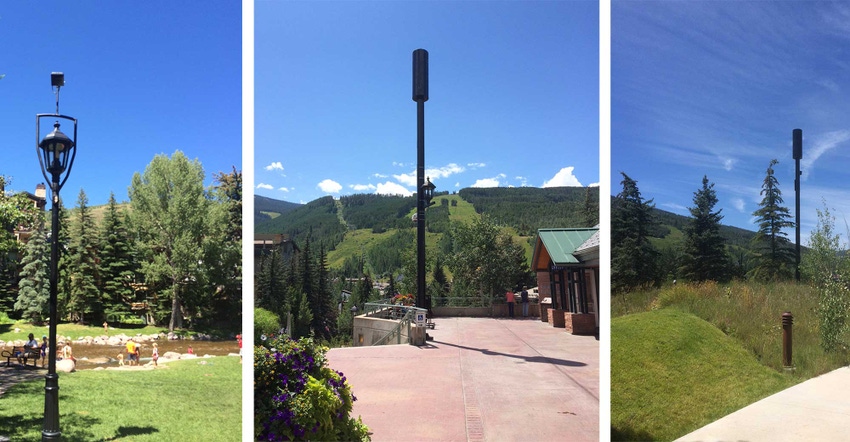This Colorado-based ski resort was laying the groundwork for its wireless network a decade ago.
November 11, 2016

Quick, name as many U.S. cities as you can that were the first to launch free public Wi-Fi. Correct answers include the usual suspects, like San Francisco, Seattle, and New York. But that list also includes the town of Vail, CO, which first installed a city Wi-Fi network in 2006.
The small town, which has fewer than 6000 full-time residents, has a big need for wireless. “We are a world-class ski resort. We have a lot of special events that come to Vail, including the FIS Alpine Ski World Cup and the GoPro Mountain Games,” says Vail’s director of information technology, Ron Braden.
The city was bracing for 30,000 to 50,000 visitors for the FIS Alpine World Ski Championships in 2015 and decided to overhaul its network, which includes Wi-Fi, fiber, and cellular. “We can pack 20,000 to 30,000 people in two square miles during special events,” Braden says. And even on a normal busy day during peak season, the number of people in the city could swell to 20,000 to 21,000—a lot considering the entire town measures 4.5 square miles.
“We have noticed that, especially with the European crowd, Wi-Fi is not an amenity; it is something they demand,” Braden says.
The city’s wireless network, however, does more than keep skiers online when they are not on the slopes. The city uses Wi-Fi—albeit a separate network than the public one—for security cameras, point-of-sale systems, parking enforcement, and for controlling heating systems and irrigation systems. Vail’s connected camera network can track suspicious vehicles and monitor crowds during events.
While investing in this network and continually upgrading it could be expensive, Vail has struck deals with vendors to keep costs down. “It was public-private cooperation that made all of this possible,” Braden says. Vail tapped Crown Castle, Ruckus Wireless, and Siklu to build out the network. “We built the cellular system with Crown Castle. In return for right of way and space for their hub, they paid for the retrofit of our Wi-Fi network. They paid for the capital expense and we covered operational expenses,” Braden says. Vail also has an initiative to bring a wireless ISP using its existing infrastructure and fiber network to also help offset the fund for capital replacement.
Vail has learned that it pays off to be an early adopter or wireless technology. “We learned a tremendous amount from our 2006 Wi-Fi deployment,” Braden says. “Probably the biggest thing was, initially, we wanted to do town-wide wireless to provide service to our residential customers and hotel guests. We realized quickly that that wasn’t feasible,” he adds. “When we redid the network in 2014, we scaled back and concentrated on our core areas where we knew we had fiber. ”
To bolster security, Vail segregates its public and private networks. “We didn’t want to have public traffic mix with city traffic. It takes a little bit more work, planning, and equipment, but it is certainly worth it,” Braden says.
The final lesson is, once the network is up and running, the number of applications for it multiplies. “Once it is built, you just start using it for everything. That is kind of how we ended up with the irrigation system. We weren’t thinking about that when we deployed it. It was just cameras and public Wi-Fi access at first,” he says. “That has evolved to include things like parking systems and street melt controls. It just starts cascading once you have it built.”
About the Author(s)
You May Also Like



.png?width=300&auto=webp&quality=80&disable=upscale)


.png?width=300&auto=webp&quality=80&disable=upscale)